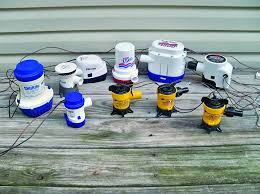Business
Reliable Dinghy Bilge Pump for Safe and Dry Boating

Owning a dinghy opens up a world of aquatic adventures, from leisurely coastal explorations to quick trips from your main vessel to shore. But every boat owner knows that keeping water out is a constant task. For smaller boats like dinghies, a reliable bilge pump isn’t just a convenience—it’s essential for safety and maintenance.
This guide will walk you through the world of dinghy bilge pumps, focusing on modern solutions that make boat ownership easier. We will explore the benefits of automatic, solar-powered systems and explain why they are becoming a popular choice for boaters who value efficiency and peace of mind.
What is a Dinghy Bilge Pump?
A bilge pump is a device designed to remove unwanted water that collects in the bilge, the lowest part of a boat’s hull. For dinghies, Rigid Inflatable Boats (RIBs), and kayaks, managing rainwater or splash-over is crucial. A small amount of water can make a dinghy unstable, and over time, it can damage the boat’s interior and equipment.
Traditionally, bailing water out of a dinghy meant using a manual bucket or hand pump. While effective in a pinch, these methods require constant effort and attention. Automatic bilge pumps solve this problem by activating on their own when water is detected, ensuring your boat stays dry even when you’re not around.
The Rise of Solar-Powered Bilge Pumps
Recent innovations have introduced solar-powered bilge pumps, which offer a sustainable and hassle-free solution for boaters. These self-contained units use a built-in solar panel to charge an internal battery, allowing them to operate day and night without needing any connection to your boat’s main power system.
Let’s look at the key advantages of choosing a solar-powered dinghy bilge pump.
Key Benefits of Solar-Powered Systems
- Automatic, Hands-Free Operation: One of the biggest advantages is the automated functionality. These pumps have internal sensors that detect water and activate the pump automatically. This means your dinghy is protected from filling with rainwater during a sudden storm, saving you from the chore of bailing it out manually.
- Completely Self-Contained: With an integrated solar panel and internal battery, these pumps are completely self-sufficient. There is no complex wiring or installation required. You can simply place the pump in your dinghy, and it’s ready to go. This makes them incredibly portable and convenient.
- Continuous Protection: The combination of solar charging and an internal battery ensures the pump can work around the clock. It charges during the day and uses the stored energy to operate at night or on cloudy days, providing constant protection.
- Eco-Friendly Solution: By harnessing the power of the sun, these pumps are an environmentally friendly choice. They reduce reliance on traditional power sources and eliminate the need for disposable batteries, aligning with a more sustainable approach to boating.
- Durability for Marine Environments: High-quality solar bilge pumps are engineered to withstand harsh marine conditions. They are often constructed from industrial-grade plastics and stainless steel to prevent rust and corrosion, even in saltwater. UV-resistant hoses also ensure that the equipment won’t degrade under constant sun exposure.
How to Choose the Right Dinghy Bilge Pump
When selecting a bilge pump for your dinghy, there are several factors to consider to ensure you get a reliable and effective unit.
- Pumping Capacity
Consider how much water the pump can move, usually measured in gallons per hour (GPH). For a small dinghy, a lower GPH rating is often sufficient to handle rainwater and minor splashes. The key is finding a pump that can efficiently clear the amount of water your boat is likely to take on.
- Power Source
Decide between a traditional wired pump and a modern solar-powered one.
- Wired Pumps: These connect to your boat’s 12V DC battery. They are reliable but require installation and draw power from your main battery.
- Solar-Powered Pumps: As discussed, these are self-contained and require no installation. They are ideal for boats kept on a mooring, on a trailer, or on a lift where access to a power source is limited.
- Activation Mechanism
Automatic pumps are the most convenient. They use either a float switch or electronic sensors to detect water.
- Float Switches: A float rises with the water level to trigger the pump.
- Electronic Sensors: These sensors detect water without any moving parts, which can increase reliability and reduce the chance of mechanical failure. Many modern solar pumps use this technology.
- Portability and Design
For a dinghy, a portable and lightweight design is a major plus. A low-profile pump can fit into tight spaces and remove water from areas inaccessible to larger pumps. Look for a unit that is easy to move and can be used in different parts of your boat, such as on the boat cover, deck, or in storage lockers. Did you know a quick rainstorm can leave hundreds of pounds of water in your boat? A portable pump can address this problem wherever it occurs.
Keep Your Adventure Afloat
A quality dinghy bilge pump is one of the smartest investments you can make for your small boat. It protects your vessel from water damage, ensures it’s ready to use when you are, and provides invaluable peace of mind.
Modern, solar-powered automatic pumps represent a significant step forward in marine technology. Their combination of convenience, efficiency, and sustainability makes them an excellent choice for any dinghy owner. By choosing a pump that fits your needs, you can spend less time bailing and more time enjoying the open water.
-

 Celebrity5 months ago
Celebrity5 months agoTrey Kulley Majors: The Untold Story of Lee Majors’ Son
-

 Celebrity5 months ago
Celebrity5 months agoChristina Erika Carandini Lee: A Life of Grace, Heritage, and Privacy
-

 Celebrity5 months ago
Celebrity5 months agoJamie White-Welling: Bio, Career, and Hollywood Connection Life with Tom Welling
-

 Celebrity4 months ago
Celebrity4 months agoNick Schmit? The Man Behind Jonathan Capehart Success
















